David Lettermen used to have a feature on his Late Night Show called "Stupid Pet Tricks." It's basically what it sounds like; pets doing pointless things.
Something I've noticed in my experiments with ATH, is that my results generally pale in comparison to everyone else, but I'm often doing strange things with the waveguide, just to see what happens.
It's hard to track my weird experiments in the main ATH thread, because there's so much traffic. I made the posts and I often have a hard time finding my own posts.
So I thought it might be fun to post some weird ATH waveguides, basically to evaluate what would happen if you made something strange.
Over the years, I've struggled to make a waveguide with a diffraction slot that actually works; most of my experiments with ATH and IRL haven't really panned out. Diffraction slots have a LOT of issues.
Then again, I found that triangular waveguides work shockingly well, even though I've never seen anyone actually build one IRL.
Something I've noticed in my experiments with ATH, is that my results generally pale in comparison to everyone else, but I'm often doing strange things with the waveguide, just to see what happens.
It's hard to track my weird experiments in the main ATH thread, because there's so much traffic. I made the posts and I often have a hard time finding my own posts.
So I thought it might be fun to post some weird ATH waveguides, basically to evaluate what would happen if you made something strange.
Over the years, I've struggled to make a waveguide with a diffraction slot that actually works; most of my experiments with ATH and IRL haven't really panned out. Diffraction slots have a LOT of issues.
Then again, I found that triangular waveguides work shockingly well, even though I've never seen anyone actually build one IRL.
Here's a waveguide I made with a diffraction slot. Normalized horizontal and vertical polars are attached. I've also attached a pic of what the enclosure looks like.
; -------------------------------------------------------
; SB26ADC Mar 2025 Waveguide with diffraction slot
; Ath version 4.9
; -------------------------------------------------------
Source.Contours = {
zoff -1
point p1 2.58 0 2
point p2 0 13 0.5
point p3 1 14 0.5
point p4 0 15 0.5
point p5 0 16 1
cpoint c1 -33.94 0
cpoint c2 0 14
arc p1 c1 p2 1.0
arc p2 c2 p3 0.75
arc p3 c2 p4 0.25
line p4 p5 0
line p5 WG0 0
}
Source.Velocity = 2
Mesh.ZMapPoints = 0.3,0.2,0.7,0.9
Throat.Diameter = 32 ; [mm]
Throat.Angle = 30 * sin(p)^2
;Slot.Length = 25.4 * cos(p)^2
Slot.Length = 25.4
;Throat.Profile = 1
Length = 114.3 ; [mm]
Coverage.Angle = 55 + 10 * sin(2*p)^2
Term.s = 0.7
;Term.s = 0.25 + 1.0 * sin(p)^4
Term.n = 4
; Term.n = 2.5 + 2.5 * sin(2*p)^2
Term.q = 0.995
Morph.TargetShape = 1
Morph.TargetWidth = 355.6
Morph.TargetHeight = 355.6
Morph.FixedPart = 0.25
Morph.Rate = 3
Morph.CornerRadius = 88.9 ; [mm]
Morph.AllowShrinkage = 1
; -------------------------------------------------------
; Mesh Setting
; -------------------------------------------------------
; ABEC
Mesh.CornerSegments = 8
Mesh.ThroatResolution = 1
Mesh.MouthResolution = 8
Mesh.Subdomainslices=
;Mesh.InterfaceOffset = 5.0
; -------------------------------------------------------
Mesh.Enclosure = {
Spacing = 64, 128, 64, 128
Depth = 150
;EdgeRadius = 38.1
;EdgeType = 1
FrontResolution = 12,12,12,12
BackResolution = 24,24,24,24
}
Mesh.Quadrants = 1
Mesh.LengthSegments = 24
Mesh.AngularSegments = 72
Mesh.SubdomainSlices =
; -------------------------------------------------------
; ABEC Project Setting
; -------------------------------------------------------
ABEC.SimType = 2
ABEC.f1 = 500; [Hz]
ABEC.f2 = 16000 ; [Hz]
ABEC.NumFrequencies = 61
ABEC.MeshFrequency = 1000 ; [Hz]
ABEC.Polars:SPL_Horizontal = {
MapAngleRange = 0,90,19
Distance = 3 ; [m]
}
ABEC.Polars:SPL_Vertical = {
MapAngleRange = 0,90,19
Distance = 3 ; [m]
Inclination = 90
}
; -------------------------------------------------------
Output.STL = 1
Output.ABECProject = 1
Report = {
Title = "SB26ADC Mar 2025 Waveguide with diffraction slot - horizontal"
PolarData = "SPL_Horizontal"
NormAngle = 0
Width = 1600
Height = 900
MaxAngle = 90
}
; -------------------------------------------------------
; SB26ADC Mar 2025 Waveguide with diffraction slot
; Ath version 4.9
; -------------------------------------------------------
Source.Contours = {
zoff -1
point p1 2.58 0 2
point p2 0 13 0.5
point p3 1 14 0.5
point p4 0 15 0.5
point p5 0 16 1
cpoint c1 -33.94 0
cpoint c2 0 14
arc p1 c1 p2 1.0
arc p2 c2 p3 0.75
arc p3 c2 p4 0.25
line p4 p5 0
line p5 WG0 0
}
Source.Velocity = 2
Mesh.ZMapPoints = 0.3,0.2,0.7,0.9
Throat.Diameter = 32 ; [mm]
Throat.Angle = 30 * sin(p)^2
;Slot.Length = 25.4 * cos(p)^2
Slot.Length = 25.4
;Throat.Profile = 1
Length = 114.3 ; [mm]
Coverage.Angle = 55 + 10 * sin(2*p)^2
Term.s = 0.7
;Term.s = 0.25 + 1.0 * sin(p)^4
Term.n = 4
; Term.n = 2.5 + 2.5 * sin(2*p)^2
Term.q = 0.995
Morph.TargetShape = 1
Morph.TargetWidth = 355.6
Morph.TargetHeight = 355.6
Morph.FixedPart = 0.25
Morph.Rate = 3
Morph.CornerRadius = 88.9 ; [mm]
Morph.AllowShrinkage = 1
; -------------------------------------------------------
; Mesh Setting
; -------------------------------------------------------
; ABEC
Mesh.CornerSegments = 8
Mesh.ThroatResolution = 1
Mesh.MouthResolution = 8
Mesh.Subdomainslices=
;Mesh.InterfaceOffset = 5.0
; -------------------------------------------------------
Mesh.Enclosure = {
Spacing = 64, 128, 64, 128
Depth = 150
;EdgeRadius = 38.1
;EdgeType = 1
FrontResolution = 12,12,12,12
BackResolution = 24,24,24,24
}
Mesh.Quadrants = 1
Mesh.LengthSegments = 24
Mesh.AngularSegments = 72
Mesh.SubdomainSlices =
; -------------------------------------------------------
; ABEC Project Setting
; -------------------------------------------------------
ABEC.SimType = 2
ABEC.f1 = 500; [Hz]
ABEC.f2 = 16000 ; [Hz]
ABEC.NumFrequencies = 61
ABEC.MeshFrequency = 1000 ; [Hz]
ABEC.Polars:SPL_Horizontal = {
MapAngleRange = 0,90,19
Distance = 3 ; [m]
}
ABEC.Polars:SPL_Vertical = {
MapAngleRange = 0,90,19
Distance = 3 ; [m]
Inclination = 90
}
; -------------------------------------------------------
Output.STL = 1
Output.ABECProject = 1
Report = {
Title = "SB26ADC Mar 2025 Waveguide with diffraction slot - horizontal"
PolarData = "SPL_Horizontal"
NormAngle = 0
Width = 1600
Height = 900
MaxAngle = 90
}
Attachments
-
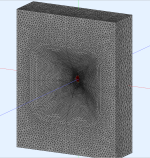 2025-03-16 12_36_54-ABEC3 - ABEC_FreeStanding.png2.5 MB · Views: 53
2025-03-16 12_36_54-ABEC3 - ABEC_FreeStanding.png2.5 MB · Views: 53 -
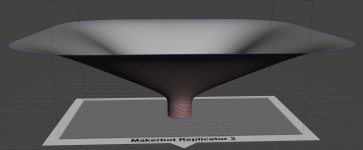 2025-03-16 12_39_21-Autodesk Meshmixer - New-Unity-031525.stl.png336.7 KB · Views: 53
2025-03-16 12_39_21-Autodesk Meshmixer - New-Unity-031525.stl.png336.7 KB · Views: 53 -
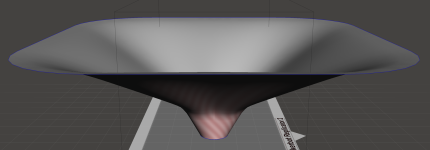 2025-03-16 12_40_12-Autodesk Meshmixer - New-Unity-031525.stl.png281 KB · Views: 56
2025-03-16 12_40_12-Autodesk Meshmixer - New-Unity-031525.stl.png281 KB · Views: 56 -
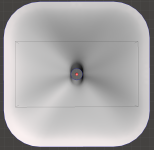 2025-03-16 12_41_18-Autodesk Meshmixer - New-Unity-031525.stl.png405 KB · Views: 67
2025-03-16 12_41_18-Autodesk Meshmixer - New-Unity-031525.stl.png405 KB · Views: 67 -
 New-Unity-031525-vertical.png189.4 KB · Views: 65
New-Unity-031525-vertical.png189.4 KB · Views: 65 -
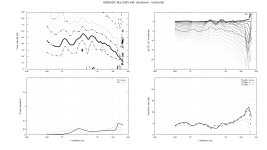 New-Unity-031525-horizontal.png176.7 KB · Views: 64
New-Unity-031525-horizontal.png176.7 KB · Views: 64
Here's the "Secret Sauce" on triangular waveguides: https://www.diyaudio.com/community/threads/triangular-waveguides.403212/post-7450887
I'd post them in this thread but it's well documented there IMHO
I'd post them in this thread but it's well documented there IMHO
Here's how to make a waveguide that's "offset."
What I mean by this, is that it's louder on one axis than the other.
This can be useful for situations like:
1) underdash horns in a car, where you need a baffle that's flat but you need to direct the sound off-axis
2) home speakers where you can't rotate them. For instance, in-wall speakers and speakers that are too big/heavy to orient towards the listener. Or maybe that just looks bad.
3) If you rotate the waveguide by 90 degrees, you can use the directivity of the waveguide to reduce radiation into the floor
Here's a pic of a car audio horn loaded compression driver:
Here's the ATH config file:
; CE360
; 2021 Marcel Batik, licensed under CC BY-NC-SA 4.0
; Ath version 4.7.1[/b]
Source.Contours = {
zoff -1
point p1 2.58 0 2
point p2 0 13 0.5
point p3 1 14 0.5
point p4 0 15 0.5
point p5 0 16 1
cpoint c1 -33.94 0
cpoint c2 0 14
arc p1 c1 p2 1.0
arc p2 c2 p3 0.75
arc p3 c2 p4 0.25
line p4 p5 0
line p5 WG0 0
}
Throat.Angle = 17.5
Throat.Diameter = 32
Throat.Profile = 1
Coverage.Angle = 34 + 51*sin(0.5*p)^4 - 15*sin(p)^4 - 15*cos(p)^4
Length = 76.2
OS.k = 1.30
Rot = 3.26
Term.n = 4.03
Term.q = 0.996
Term.s = 1.2 - 0.6*cos(p)^2
Source.Shape = 2
Mesh.AngularSegments = 64
Mesh.LengthSegments = 28
; Mesh.SubdomainSlices =
Mesh.InterfaceOffset = 5.0
Mesh.Quadrants = 12
Mesh.ThroatResolution = 3
Mesh.MouthResolution = 8
ABEC.SimType = 1
ABEC.f1 = 750; [Hz]
ABEC.f2 = 12000; [Hz]
ABEC.NumFrequencies = 25
ABEC.MeshFrequency = 1000 ; [Hz]
ABEC.Polars:SPL_H = {
MapAngleRange = -90,90,37
Distance = 3 ; [m]
Offset = 90
}
ABEC.Polars:SPL_V = {
MapAngleRange = 0,90,19
Distance = 3 ; [m]
Offset = 90
Inclination = 90
}
Output.ABECProject = 1
Output.STL = 1
Report = {
PolarData = "SPL_H"
Title = "Offset waveguide - Vertical"
Width = 1600
Height = 900
;NormAngle = 0
}
Attached are the horizontal sims to the left and to the right. Note that the waveguide is louder on one axis than the other.
What I mean by this, is that it's louder on one axis than the other.
This can be useful for situations like:
1) underdash horns in a car, where you need a baffle that's flat but you need to direct the sound off-axis
2) home speakers where you can't rotate them. For instance, in-wall speakers and speakers that are too big/heavy to orient towards the listener. Or maybe that just looks bad.
3) If you rotate the waveguide by 90 degrees, you can use the directivity of the waveguide to reduce radiation into the floor
Here's a pic of a car audio horn loaded compression driver:
Here's the ATH config file:
; CE360
; 2021 Marcel Batik, licensed under CC BY-NC-SA 4.0
; Ath version 4.7.1[/b]
Source.Contours = {
zoff -1
point p1 2.58 0 2
point p2 0 13 0.5
point p3 1 14 0.5
point p4 0 15 0.5
point p5 0 16 1
cpoint c1 -33.94 0
cpoint c2 0 14
arc p1 c1 p2 1.0
arc p2 c2 p3 0.75
arc p3 c2 p4 0.25
line p4 p5 0
line p5 WG0 0
}
Throat.Angle = 17.5
Throat.Diameter = 32
Throat.Profile = 1
Coverage.Angle = 34 + 51*sin(0.5*p)^4 - 15*sin(p)^4 - 15*cos(p)^4
Length = 76.2
OS.k = 1.30
Rot = 3.26
Term.n = 4.03
Term.q = 0.996
Term.s = 1.2 - 0.6*cos(p)^2
Source.Shape = 2
Mesh.AngularSegments = 64
Mesh.LengthSegments = 28
; Mesh.SubdomainSlices =
Mesh.InterfaceOffset = 5.0
Mesh.Quadrants = 12
Mesh.ThroatResolution = 3
Mesh.MouthResolution = 8
ABEC.SimType = 1
ABEC.f1 = 750; [Hz]
ABEC.f2 = 12000; [Hz]
ABEC.NumFrequencies = 25
ABEC.MeshFrequency = 1000 ; [Hz]
ABEC.Polars:SPL_H = {
MapAngleRange = -90,90,37
Distance = 3 ; [m]
Offset = 90
}
ABEC.Polars:SPL_V = {
MapAngleRange = 0,90,19
Distance = 3 ; [m]
Offset = 90
Inclination = 90
}
Output.ABECProject = 1
Output.STL = 1
Report = {
PolarData = "SPL_H"
Title = "Offset waveguide - Vertical"
Width = 1600
Height = 900
;NormAngle = 0
}
Attached are the horizontal sims to the left and to the right. Note that the waveguide is louder on one axis than the other.
Attachments
-
![2025-03-21 09_10_57-VacsViewer - (new) - [Converted from PM_SPL_H].png](/community/data/attachments/1346/1346263-a2c80451471154838e7f76fbb42375b7.jpg?hash=gFRChuhiFG) 2025-03-21 09_10_57-VacsViewer - (new) - [Converted from PM_SPL_H].png369.1 KB · Views: 32
2025-03-21 09_10_57-VacsViewer - (new) - [Converted from PM_SPL_H].png369.1 KB · Views: 32 -
![2025-03-21 09_16_21-VacsViewer - (new) - [Converted from PM_SPL_H].png](/community/data/attachments/1346/1346264-6c658367a3a22987f0e5c71eaab4c068.jpg?hash=abdrz7gYrl) 2025-03-21 09_16_21-VacsViewer - (new) - [Converted from PM_SPL_H].png499.8 KB · Views: 29
2025-03-21 09_16_21-VacsViewer - (new) - [Converted from PM_SPL_H].png499.8 KB · Views: 29 -
![2025-03-21 19_11_46-VacsViewer - (new) - [Converted from PM_SPL_V].png](/community/data/attachments/1346/1346265-d7fb5893c35350d192bc400ae01b91d9.jpg?hash=naSign4-1L) 2025-03-21 19_11_46-VacsViewer - (new) - [Converted from PM_SPL_V].png396.6 KB · Views: 35
2025-03-21 19_11_46-VacsViewer - (new) - [Converted from PM_SPL_V].png396.6 KB · Views: 35 -
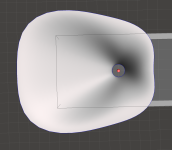 2025-03-21 19_26_42-Autodesk Meshmixer - asymmetric2-ce360-031925.stl.png351.5 KB · Views: 32
2025-03-21 19_26_42-Autodesk Meshmixer - asymmetric2-ce360-031925.stl.png351.5 KB · Views: 32 -
 2025-03-21 19_27_19-Autodesk Meshmixer - asymmetric2-ce360-031925.stl.png108.1 KB · Views: 36
2025-03-21 19_27_19-Autodesk Meshmixer - asymmetric2-ce360-031925.stl.png108.1 KB · Views: 36